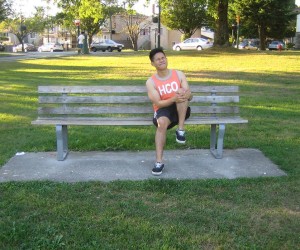An anterior cruciate ligament injury involves a tear in one of the knee ligaments that links the upper leg bone with the lower leg bone. The ligament is responsible for keeping the knee stable.
The injuries range from mild to severe. If not treated, the damaged anterior cruciate ligament could not fully control knee movement and the bones are likely to rub against each other. The irregular bone movement can impair the tissue covering the ends of the bones and trap and rip the pads cushioning the knee joints.
Oftentimes, other ligaments or parts of the joint can also be damaged. This includes the menisci or even the bones that can be impaired.
What are the possible causes?

An anterior cruciate ligament injury can occur if the knee is flexed backward, twisted or flexed sideways. The risk for injury is increased if more than one of these movements takes place at the same time. A direct blow or contact can also cause an anterior cruciate ligament injury.
It often occurs while playing sports especially when the foot is planted firmly on the ground and an abrupt force strikes the knee while the leg is slightly bent or straight. Remember that this occurs while changing direction quickly, landing from a jump or slowing down while running.
Falls from a ladder or tripping on stairs are other possible causes. Just like with other parts of the body, the anterior cruciate ligament weakens with age. A tear is likely to occur among individuals older than the age of 40 years old.
What are the indications?
- Hearing or feeling a pop in the knee at the time of injury
- Pain or discomfort on the outside and rear part of the knee
- Swollen knee in the initial hours of the injury. This might be an indication of bleeding within the joint. Abrupt swelling is an indication of serious damage to the knee.
- Limited knee movement due to swelling or pain or both
- Knee feels unstable, buckling or about to give out.
After an acute injury, the individual should stop any activity due to the pain, but he/she can still walk.
Management
First aid must be performed right away using the RICE method.
- Rest the knee
- Ice the affected joint
- Compress the area using an elastic bandage
- Elevate the leg by raising above the level of the heart
Over-the-counter pain medications can be given but make sure to carefully follow the instructions on the packaging.
Crutches should be used and a knee immobilizer to keep the knee still during the initial few days after the injury.
The knee should be assessed by the doctor. Remember that treatment is vital. If not properly managed, the injury can become a lasting condition.
Disclaimer / More Information
The information posted on this page on anterior cruciate ligament injury is for learning and educational purposes only. To learn to properly manage ligament injuries including on the anterior cruciate ligament, register for first aid training at one of our training centers located throughout Canada. The training centers are in Edmonton, Calgary, Vancouver, Kelowna, Surrey, Winnipeg, Red Deer, Toronto, Ottawa and Halifax.
